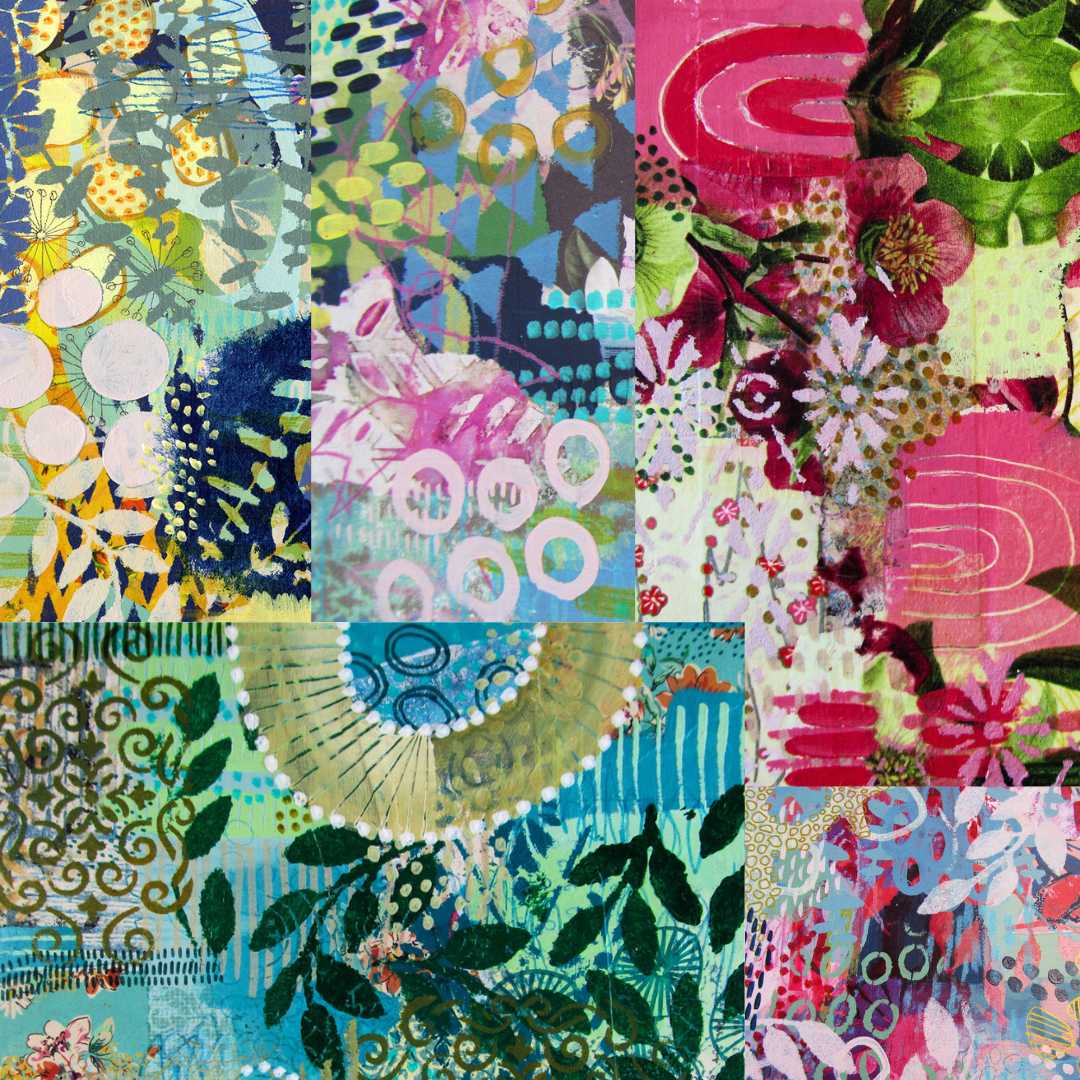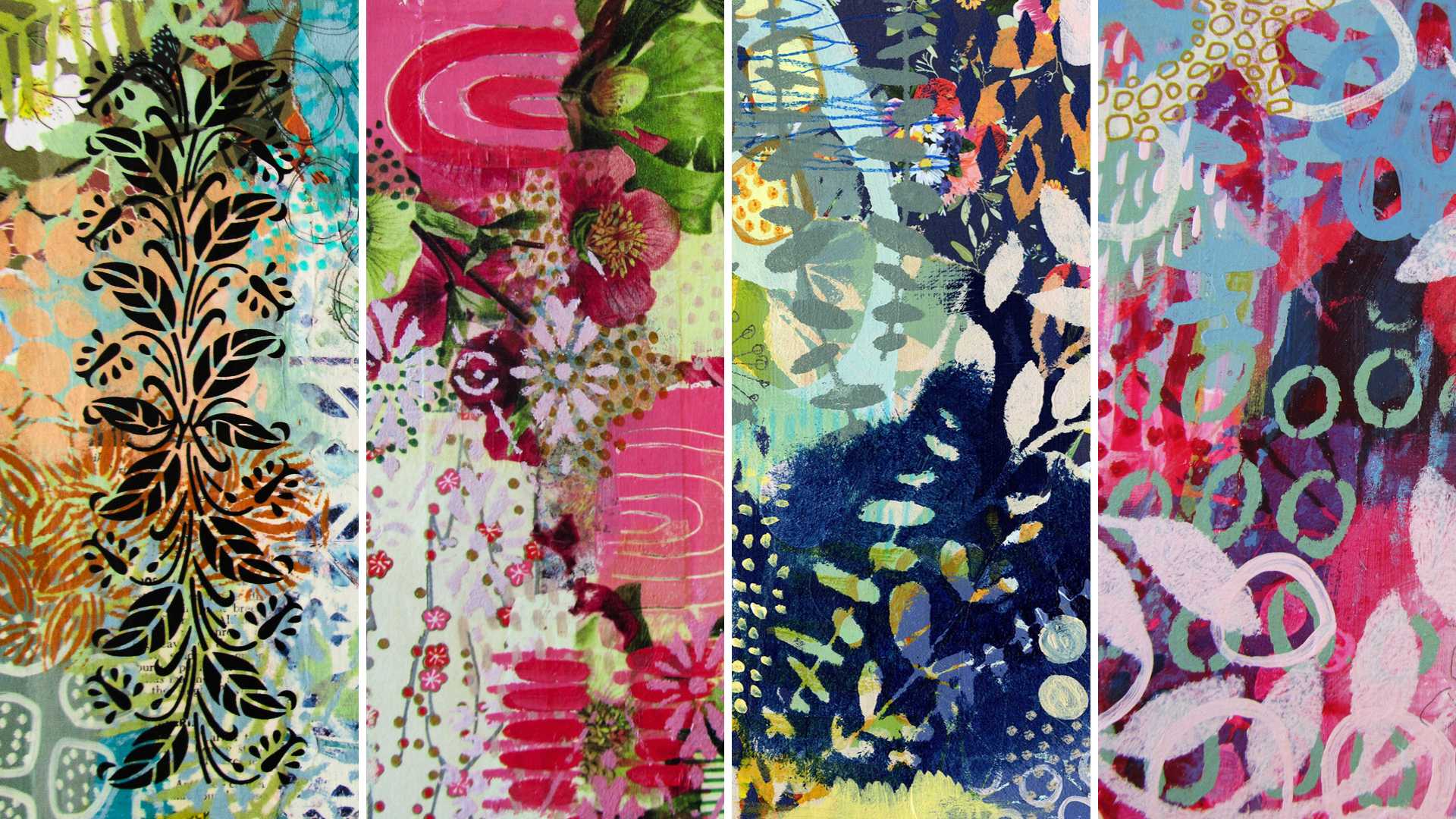
Discover the secret to painting freely
When I start a painting, I have no idea what it will look like when I’m done. I have a few guidelines that I follow, like the painting will have some flowers and perhaps a butterfly, but I don’t know what these will be specifically.
Rather, I start by playing and remaining curious. The first layers in a painting are a time for trying things out and seeing what happens. I’m not interested in creating an end product (i.e., seeing what I can make), I’m interested in process (i.e., seeing what I can do). It’s about exploring what I can do with the tools I have and trying new colour combinations. It’s about making mistakes, creating something unexpected, letting go of control, and creating variety in marks, shapes, line work, value, colour, and texture.
My first concern is to create an interesting background that has many layers. Although most of these layers will be covered up during the painting process, some may peek through in the finished work. And the surface I create serves to inform future choices, such as the final colour palette, the placement of focal images, and the choice of supporting marks. Therefore, the initial layers are vitally important. It’s also vitally important that I just play and experiment in these early phases so that there’s the possibility of creating something unusual and new. That’s how we grow as artists.

Mindset that’s helpful in the early stages of your work
- Be playful. When we play, we’re spontaneous and open to new experiences; we’re eager to explore, seeking out new ideas and possibilities; we’re flexible and embrace the unexpected; we improvise and adjust; and we’re open to trying unconventional ways of doing things.
- Be curious. Ask: If I use this tool, what happens? If I hold my brush this way, how do my marks differ? What happens if I paint bold or soft, precise or messy, and so on?
- Be an explorer. You want to make discoveries that you’re excited about. One way to do this is to work on multiple backgrounds at the same time. When you discover an interesting technique on one canvas, you can transfer it across to the next canvas and then add new things over the top. This way you make more discoveries, learn more quickly, and ultimately make better art.
- Embrace imperfection. Use some techniques that you have little control over: drip ink, make marks with cling film, drop salt into watery wet paint. These are marks that you couldn’t possibly make using controlled methods and they make your painting feel more spontaneous.
Most of all, enjoy yourself. When we're happy and enthusiastic while we're painting, it shows on the surface of the canvas - our paintings have energy and life.
Back